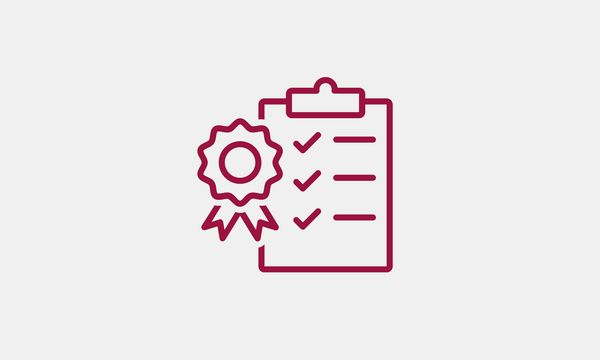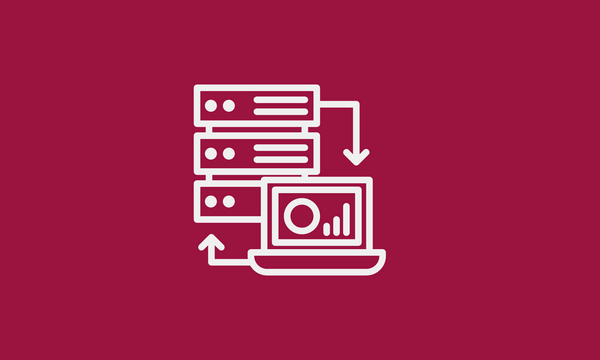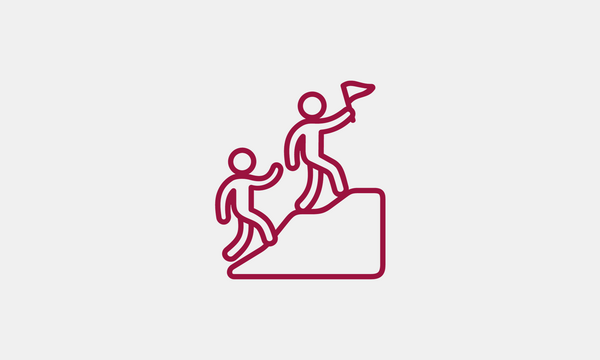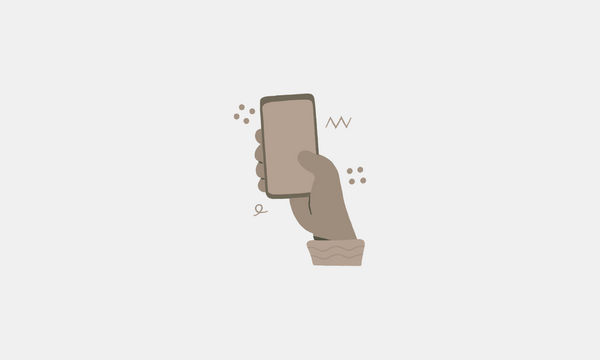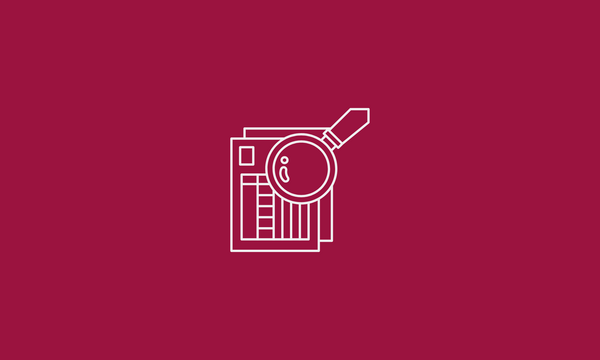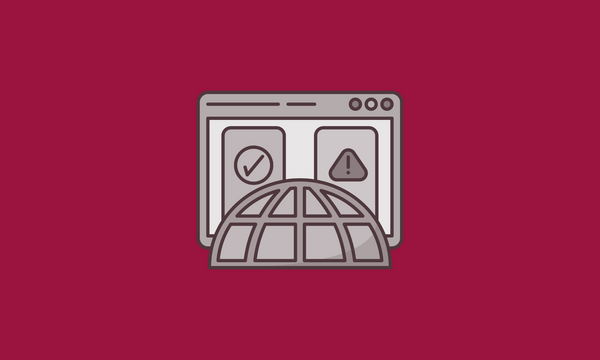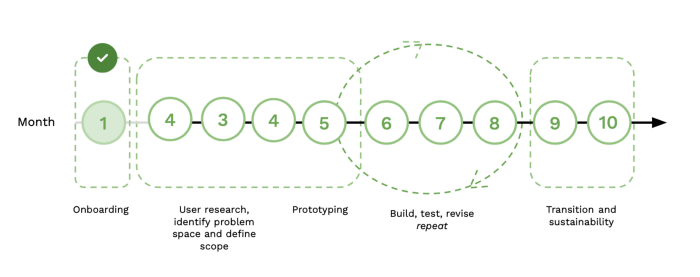
A peek into the discovery process for the Canada Energy Regulator fellowship project

Gillian Wu
May 20, 2021
Hi there! My name is Gillian, and I am the UX Design Fellow that is part of the 5th cohort working at Code for Canada to improve digital governance. Alongside my teammates Malik Jumani (Product Manager Fellow) and Ian Cappellani (Developer Fellow), we are working with the Canada Energy Regulator (CER) to improve the tools that Canadians use to participate in hearings regarding energy projects regulated by the CER.
To learn more about us, click here.
Back in February, our fellowship team at Canada Energy Regulator completed our first milestone. We finished the discovery phase and documented some of the processes below.
Project overview
- The main goal is to improve the experience hearing participants have while using the systems that support public participation in Canada Energy Regulator (CER) proceedings. We will look at tools such as participant registration, evidence filing, and the external website.
- The second goal is to build the CER’s internal digital capacity to better align with the Government of Canada’s Digital Standards. We will do this by leading workshops, hosting lunch-and-learns, and providing suggestions on process improvements.
The challenge
How might we remove barriers to participating in the CER’s energy adjudication process and make the experience less confusing?
The timeline
Our time at the CER consists of the following phases:
- Discovery: Where we begin to understand the current state of the problem and learn how the organization works. We will conduct stakeholder and user interviews to help us narrow down the problem space so we can prioritize the highest impact issues.
- Prototyping: Where we ideate potential solutions to pursue and test them with users to see which ones work best. We will iteratively fine-tune the features and solutions as we go.
- Building: Where we develop the prototype into a working product to launch.
- Transition and sustainability: Where we work to ensure that our solution will be adopted by the organization after we leave.
This timeline outlines the ideal phases for our fellowship project. The specific start dates of each phase may change in response to the needs of the project. For example, if user research went beyond the allocated time, we might have to adjust the prototype and development phase.
The process to final delivery
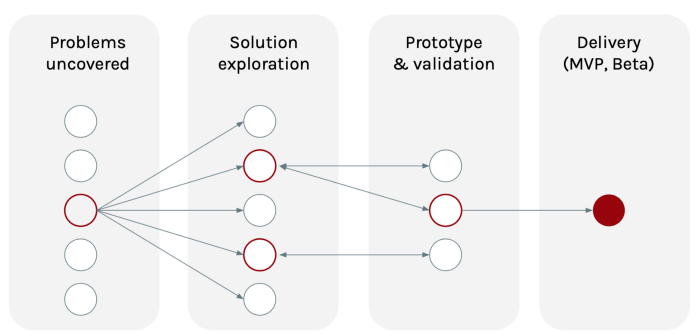
Our end goal is to get features and improvements delivered.
While our team is only there for a short period, it is important to note that the solution or product does not end after we deliver it. Staff members within the CER will need to continue to improve the product. More research is required to uncover the other issues that need to be addressed.
Constraints
Even though we get a lot of amazing ideas from staff, stakeholders and the users, our team is constrained by time and resources. This will directly impact how we scope down the problems we solve and the features we deliver.
Our fellowship is ten months, but we have even less time to work on the project. We have a month of onboarding, and a two-month transition period where we document our work. Realistically, we only have seven months to work on our project.
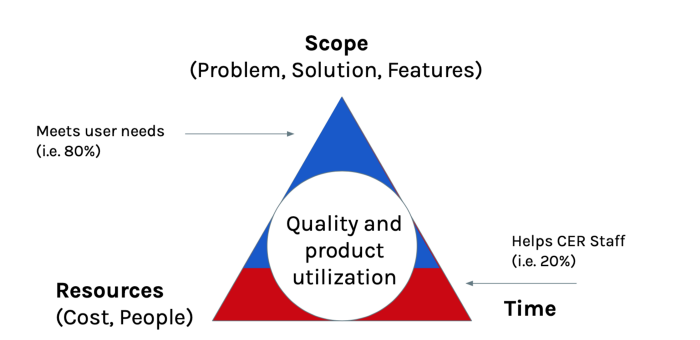
Partway through our research with internal staff, we realized that whatever the final solution is, it needs to be useful to the CER staff and make their lives easier. That way it will be easier to facilitate internal adoption.
Things that we have completed in the discovery process:
Secondary research
Our team first conducted secondary research because it was the fastest and easiest way to probe into the problem space while we wait on people to respond back to our request for user interviews.
Our research includes:
- Examining Google Analytics and the Search Engine Optimization (SEO) of the CER website.
- Walking through the participation tools and identifying areas for improvement.
- Looking at other energy regulators and their toolsets.
- Reviewing feedback obtained through post-hearing surveys.
Primary research
Internal stakeholder interviews
We conducted one-on-one interviews with internal staff and stakeholders in order to understand the organizational goals and KPIs. We talked to the key decision-makers on the final product (VPs), regulatory decisions makers at the CER (Commission), staff who coordinate the steps of the hearing process and staff who support participants during the proceedings.
External participant interviews
Through our secondary research, we learned that the main participants of the CER’s hearing process usually fell under three main categories. They include people who are directly affected by an energy project, concerned individuals, and companies. We had the chance to talk to nine people, all of who fell under the first two categories.
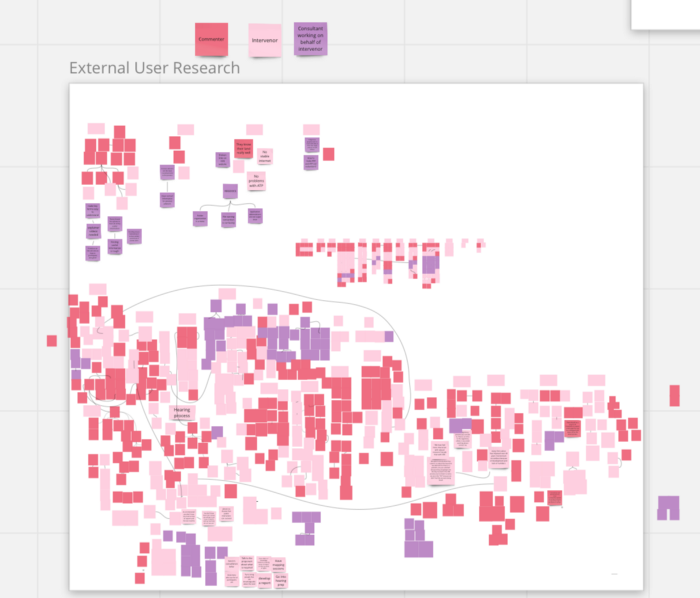
Usability testing
We hosted six different usability testing sessions with the tools we wanted to improve. This helped us uncover where first-time users were getting stuck in the process and what barriers they might have faced along the way.
User flow
Our team mapped out the current participant flow through the hearing process, which was later translated into a user journey map. From the research, we were able to identify key moments and problems in the experience where our team can create the most impact.
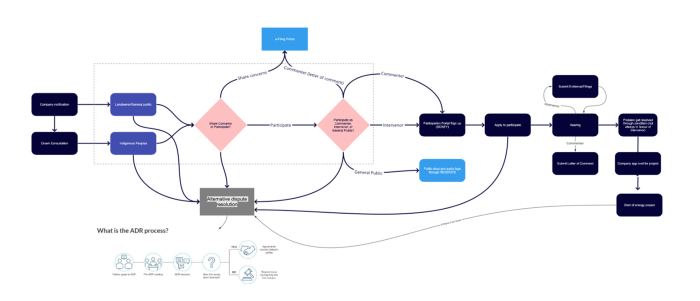
Proto-persona workshop
Early in the fellowship, I hosted a proto-persona workshop with subject matter experts in our organization. This was done to better understand the needs and barriers each participant faced in the hearing process. It also allows us to determine the types of people we should be reaching out to for user research, and the questions we should be asking them. Learn more about our experience here.

Problem identification and prioritization
We identified the different problems through the synthesis of our research notes. Then we narrowed down the broader themes into how we might statements before running a prioritization workshop.
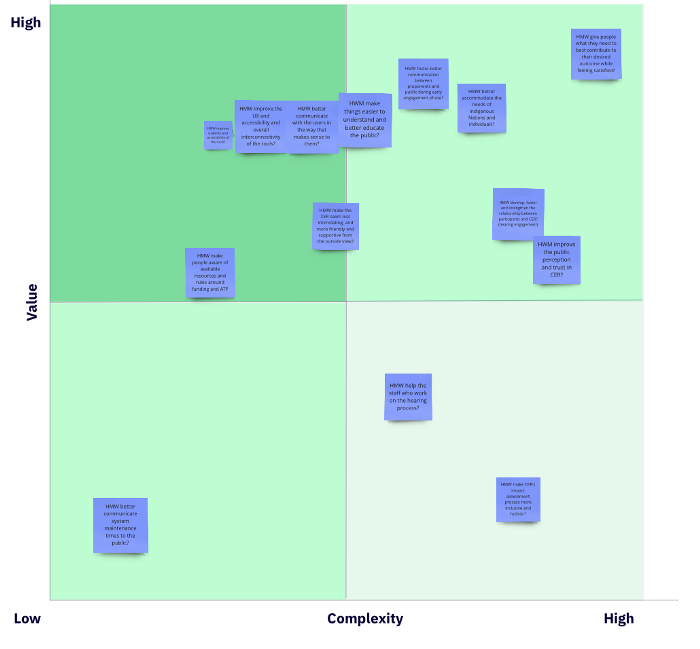
In the next article, I will be diving deeper into the insights that were uncovered during the user research sessions and how we turned them into actionable problems to be solved.
End of articles list
